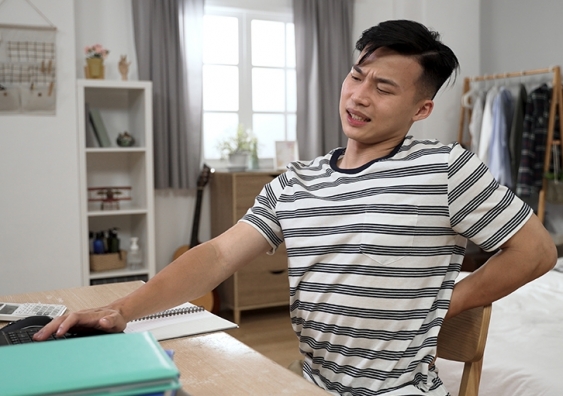Low back pain: only 1 in 10 treatments effective, new research shows
2025-03-19T09:47:00+11:00

Photo: Adobe Stock
A new systematic review shows only few treatments have benefits for low back pain treatment, with more research urgently needed.
Only around one in 10 common treatments for low back pain is effective and many offer pain relief that’s barely better than placebo, new research published today in has found.
Deputy Director of the Centre for Pain IMPACT at Neuroscience Research Australia (NeuRA) and Conjoint Senior Lecturer in the School of Health Sciences at —«√¿∆Â≈∆, Dr Aidan Cashin, said low back pain was a growing global problem.
“The majority of pain in this space is classified as non-specific, that is with no immediately identifiable cause,” Dr Cashin said.
“Non-surgical and non-interventional treatments are first-line care for low back, so we wanted to see how effective these are, compared with placebo.
“Surprisingly, we found only around one in 10 was effective and most provided pain relief that was only marginally better than placebo – in other words, our review did not find reliable evidence of large effects for any of the included treatments.”
What the research found
The systematic review looked at 301 trials and provided data on 56 different treatments or treatment combinations. These trials included people with acute low back pain, chronic low back pain and some with both types. Studies had to report a continuous measure of pain intensity, as it was a core outcome and often primary treatment target.
“Treatments included in the research were pharmacological, such as non-steroidal anti-inflammatory drugs – or NSAIDs – and muscle relaxants, but also non-pharmacological, like exercise and massage,” Dr Cashin said.
“We found for acute low back pain, NSAIDs may be effective. For chronic low back pain, exercise, spinal manipulation, taping, antidepressants and TRPV1 agonists may be effective. However, those effects were small.”
The researchers also found moderate-quality evidence showed treatments for acute low back pain that were not effective included exercise, steroid injections and paracetamol, while anaesthetics (i.e. Lidocaine) and antibiotics weren’t effective for chronic low back pain.
The evidence was inconclusive for 10 non-pharmacological and 10 pharmacological treatments for acute low back pain. It was also inconclusive for a wide range of 22 non-pharmacological treatments.
“The effectiveness for most treatments is uncertain due to the limited number of randomised participants, and poor study quality,” Dr Cashin said.
Further placebo-controlled trials needed
Dr Cashin said given evidence was inconclusive for many treatments, more research was urgently needed.
“We need further high-quality, placebo-controlled trials to understand the efficacy of treatments and remove the uncertainty for both patients and clinical teams,” Dr Cashin said.
“Placebo-controlled studies are the gold standard for evaluating the effects of treatments, with a clear need to better understand which treatments work for people with low back pain.”
Dr Cashin said people with low back pain should talk to their medical team to understand the treatments available and best suited to their individual situation.
The systematic review was a collaboration by researchers from several global institutes, including the University of Sydney.
Media enquiries
Isabelle Dubach, Senior News & Content Manager
∞’±±Ù:Ã˝+61 432 307 244
∑°≥æ≤πæ±±Ù:Ã˝i.dubach@unsw.edu.au





